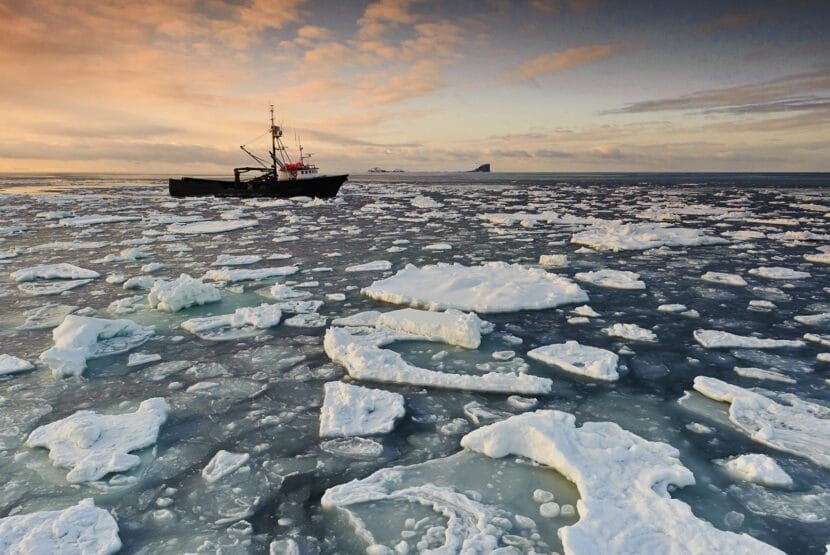
Scientists had previously linked the crash of the Bering Sea snow crab population in recent years to warming ocean waters. But a new study released Wednesday by the National Oceanic and Atmospheric Administration deepens the connection between human-caused climate change and the die-off.
Snow crabs are well suited for Arctic conditions. But Mike Litzow — the lead author of the report, which was published in the journal “Nature Climate Change” — said the southeastern Bering Sea is changing to more sub-Arctic conditions through a process called borealization. St. Matthew Island to the south, nothing north of 60 degrees’ latitude is included in the southeastern Bering Sea. It’s a process that’s also happening in terrestrial ecosystems in Alaska.
“Like an Arctic terrestrial ecosystem around Kotzebue is traditionally tundra, you don’t have shrubs. But as you borealize, you get more shrubs, even trees,” said Litzow, who is also the director of NOAA’s Alaska Fisheries Science Center in Kodiak. “So you can imagine what a huge transition it is to go from tundra to forest. And it’s the same type of thing going from ice-associated to no ice all year.”
This borealization, brought on by human-caused climate change, means warmer conditions and more negative effects for snow crab in the southeastern Bering Sea. That includes a greater abundance of predator species like Pacific cod, shifts in food availability for crabs and increased bitter crab disease which can be fatal. These were all evident in 2018-2019 when the thermal barrier — a cold pool of water in the Bering Sea — vanished, bringing on extreme ecosystem shifts that allowed different species of groundfish to migrate further north.
Litzow and his team had previously confirmed that a combination of these factors caused the crash of snow crab populations between the years 2018 and 2019, when the stocks declined greater than 90%. The population still hasn’t recovered. And after the last two back to back years without a commercial fishery, which is estimated to be worth roughly $227 million of ex-vessel value annually, fishermen have also not fully recovered. And the snow crab most likely never will.
The new report indicates the fishery may be entirely displaced in the coming decades. Litzow said the recent changes are not part of a one-off event and ecosystem-wide changes are expected to continue to affect snow crab populations into the future.
“So it’s not like we are going to lose snow crab anytime soon, but we should expect the southern limit of their range to be retracting north, fairly rapidly,” Litzow said.
There is still hope for a short-term recovery of snow crab over the next five years however, based on favorable abundance seen during a 2022 bottom trawl survey. The Alaska Fisheries Science Center conducts an annual bottom trawl survey in the eastern Bering Sea, but won’t do a survey this year in the Northern Bering Sea.
Otherwise, Litzow and his team said the southeastern Bering Sea may only see Arctic conditions 8% of the time in the years to come.
As for this year’s snow crab commercial fishing season, the North Pacific Fishery Management Council, and the Alaska Department of Fish & Game, are expected to make a decision on opening or closing the fishery in October.
Editor’s Note: Mike Litzow is on KMXT’s board of directors, which has no input on this article or any of its other news coverage.
